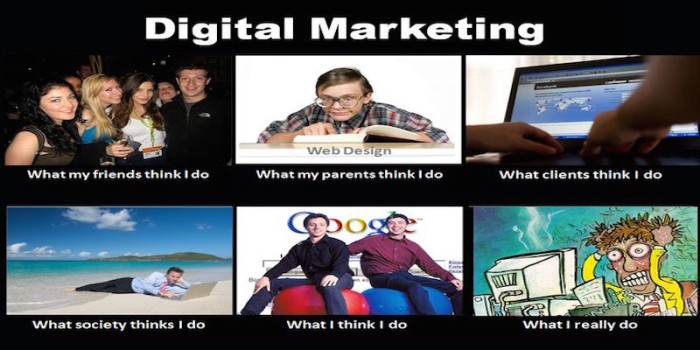
The multi-channel agency of the future
In today’s multi-channel marketing era, agencies are going though a process of evolution to survive and to acquire a greater share of brand advertising budgets.
PR, advertising and marketing agencies are under increasing pressure to diversity their offerings, or risk losing out on business to outfits that have matured beyond their initial specialism.
Then
Advertising grew up in silos, the biggest of which was “offline” and “online”. Within these divisions, agencies offered PR services, lead generation services, ad services, and events organisation, on the “offline” side.
On the “online” side, it was the norm to work in a digital agency where departments sat independently and rarely—if ever—communicated with one another: SEO, PPC, affiliates, display and social (“let’s just do a it of social”, was often the quip of the other channel departments).
Ad agencies historically straddled the division, buying “space” across print, radio and television.
These divisions allowed agencies to position themselves as experts to client brands. When it came to big brands and big budgets, this proved very profitable, with retainer-based models being the norm over performance based, incentivised or rev-share models of remuneration.
Now
At the topline level, online and offline have merged. It’s no longer effective to construct campaigns that don’t carry the same message through the line, which necessitates that agencies communicate effectively between one another—or that an integrated partner is sought.
In the online space, the penny has finally dropped that all channels contribute to an interaction—whether that’s a social media page like/follow, a newsletter subscription, a download or an outright sale. This means that all departments must talk to one another and an agency must be confident in looking at multi- click attribution models.
When Google retired keyword data from Google Analytics, SEO teams throughout the industry were forced to talk to their PPC peers, in order to glean insight into what was being searched for—and converting—on the search engine space.
This set the precedent for search teams to become far more strategic, synergistic and united in the aim to construct search campaigns that return meaningful results and deliver relevant content to users.
The need for technology
ROI-driven marketing and PR activity is now the norm rather than the exception, which means that agencies need to prove their money’s worth, every step of the way.
At the inception of tracking technology, last click attribution provided a very artificial view of the user journey and obscured the value of preceding interactions. Multi-click attribution is a great aspiration for many agencies—but in many cases, there are still holes in implementation.
The agencies that demonstrate real ROI, provide a transparent view of the user journey and ultimately retain their accounts are those who either build proprietary tracking solutions or those who understand how to deploy and configure out-of-the-box technology.
In the content marketing arena, decent blogger outreach software is another area where the strong are differentiated from the weak. Outreach packages allow an agency to tailor individual approaches to bloggers, ensure their buy-in and build databases that last long after an individual or a team have departed.
The rise of the content marketing agency
Back in April 2011, Google launched Panda, which sought to penalise the rank of low quality websites, whilst elevating those sites with unique and relevant content. What’s more, Google Penguin took things a step further in April 2012, by penalising the visibility of websites with questionable backlinks.
This sent the old-school SEO world into panic, with questionable practitioners swiftly finding themselves out of business as Google demanded relevant, high authority backlinks, which can only really be acquired via unique and high quality content distribution.
These changes effectively re-invented the SEO wheel, by positioning quality content in as high an echelon as good site architecture. Each update that occurs continues to evolve search engine marketing into a more honest and quality-driven discipline.
The abrupt shift in landscape saw an opportunity open up for PR agencies—but it’s an opportunity that only the shrewd and cutting edge operations have adopted.
Should you worry about outsourcing?
In a word, no. If your supplier is transparent about what’s going on in-house and externally, they will be proud to tell you the name and the remit of their preferred partners.
Agencies who take a fee to manage an entire process through fully deserve that fee if the process does as it’s designed to do: relieve you of all the stress associated with administration and co-ordination.
If, however, you find yourself having to sort out lapses in communication between partners and can see gaps in quality with the finished article, it’s time to start asking questions.
What does this mean for you?
As a client, you’ll have a great pick of multi-channel agencies, and the promise of a “fully integrated”, “through the line” or “end-to-end” solution.
This is very attractive and allows you to negotiate contracts based on various models of compensation.
The increased competition from the agency side will encourage your supplier to remain nimble and best-in-class.
The onus on clients is to go through a thorough prospect process at RFP stage, to ensure that the superstars are singled out from the fly-by-night operations.
What does this mean for agencies?
The true test here, then, is not being a jack-of-all-trades but remaining polished: this can be achieved by remaining true to your specialism, growing some new services in-house based on strategic hires and developing the skillset of your existing staff.
The next step is to select your outsource partners carefully, whilst arranging commercials that make it worth their time to work as hard for you and your client as it is for their own, retained clients.
Want more information? Contact us here
